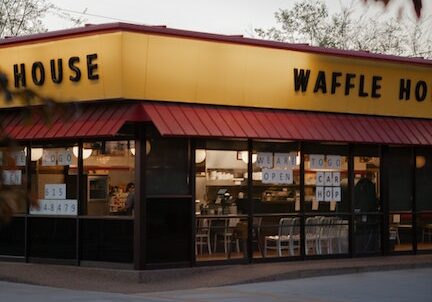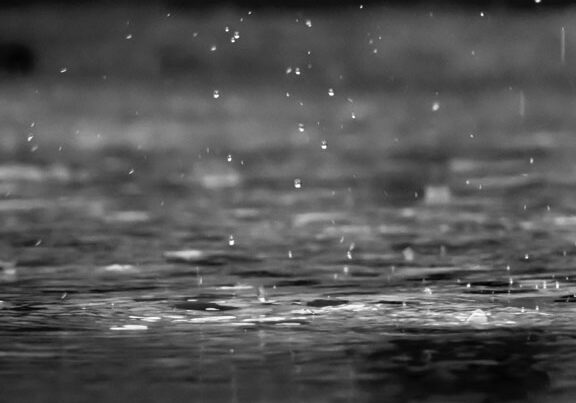Braid Mission
Blog
The Waffle House Index

One big downside to living in the Bay Area is that our closest Waffle House is 641 miles away, in Goodyear, Arizona.
If you grew up west of the Mississippi River, you may be unfamiliar with Waffle House (known familiarly as WaHo). As you can see from the map, the majority of WaHos in the country are clustered thickly in the South. I grew up basically right in the middle of the orangey-yellow blob filled with red dots representing Waffle House locations.
As such, I spent a lot of time in various Waffle Houses as a teenager, and when I returned to Tennessee for several years after college.
First of all, it’s ubiquitous: there is a Waffle House at almost every freeway exit throughout the South. Every road trip in the Southeast is punctuated by at least one WaHo stop.
Second, it’s affordable. My allowance in high school could go a long way there. I could usually take down a waffle or two, a generous serving of hash browns, and a bottomless cup of coffee for just a few bucks.
Third, it’s always open. 24/7/365. We went to Waffle House after football games, after prom, after concerts. My church youth group had a tradition of gathering there after midnight mass on Christmas Eve.
Fourth, it’s not pretentious. Waffle Houses are all the same basic small box with a grill, a counter, and a few booths. They serve food on old-school Corningware dishes, and the servers and the cooks yell back and forth about the orders. The surfaces of every Waffle House are covered in a thin film of grease, which is part of the authenticity and charm.
And they only serve breakfast food – what’s not to love?
These last two weeks, as Hurricanes Harvey and Irma descended, I learned another very significant thing to respect about Waffle House.
Unbeknownst to me during all those years, there is actually something called the “Waffle House Index,” developed by the Federal Emergency Management Agency. Apparently, WaHo is known for staying open during hurricanes even when everything else is closed down.
The Waffle House Index has three designations: green indicates a restaurant that is open and serving its full menu; yellow is one that is open and serving a partial menu; red means the restaurant is closed and probably destroyed.
Because if it is possible for a Waffle House to stay open, it will. Some of this is based on diligent preparation and supplies: the company anticipates storms and makes sure locations in the path are well-stocked with food and gas generators. It’s also possible because of some of the fine qualities I listed above, such as their simple menu, small scale, low staffing needs, and close proximity to other locations.
But the real secret to keeping restaurants open through thick and thin is the Waffle House “jump teams.”
These teams are made up of folks who work at Waffle Houses outside the area affected by a storm, who show up to run the restaurant as soon as the worst has passed. As one article explains: “One of the reasons why these jump teams are the key to the chain’s success is because employees may not be able to work if they’re dealing with their own hurricane damage.”
Some members of the jump team run the restaurant, and others help employees repair their homes, find lodging, and get other essential supplies. Basically, they hold down the fort until power is restored and a restaurant owner and employees are back on their feet.
The result is a continuous supply of waffles in any weather and a restaurant franchise that has been described as “resilient.”
All of this is just one illustrative example of why mentor teams are so effective with youth who have experienced trauma.
All of our youth have watched much of what is loved and familiar in their lives being swept away in moments. They have suffered massive emotional storms that can continue to wreak havoc for years to come.
As their dedicated teams, Braid mentors arrive from outside that turmoil to surround them with presence and communion and hope, to support them as they “deal with their own hurricane damage” and re-create themselves. They help model what it means to be functioning and whole, until the rains stop and youth are able to feel that for themselves again.



